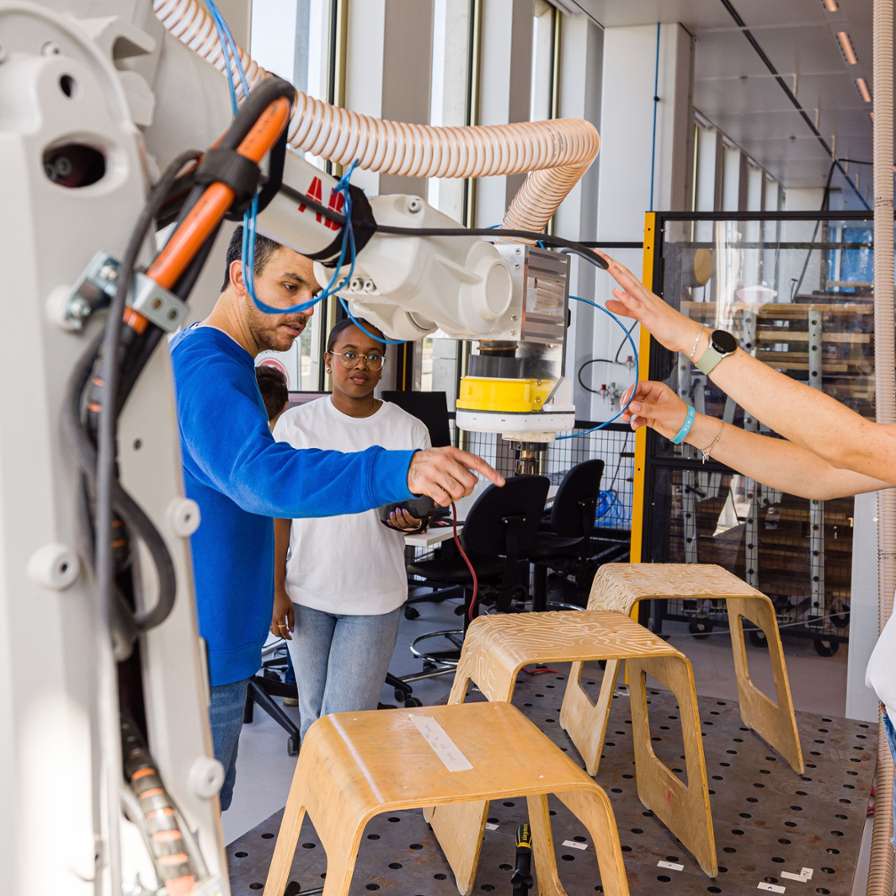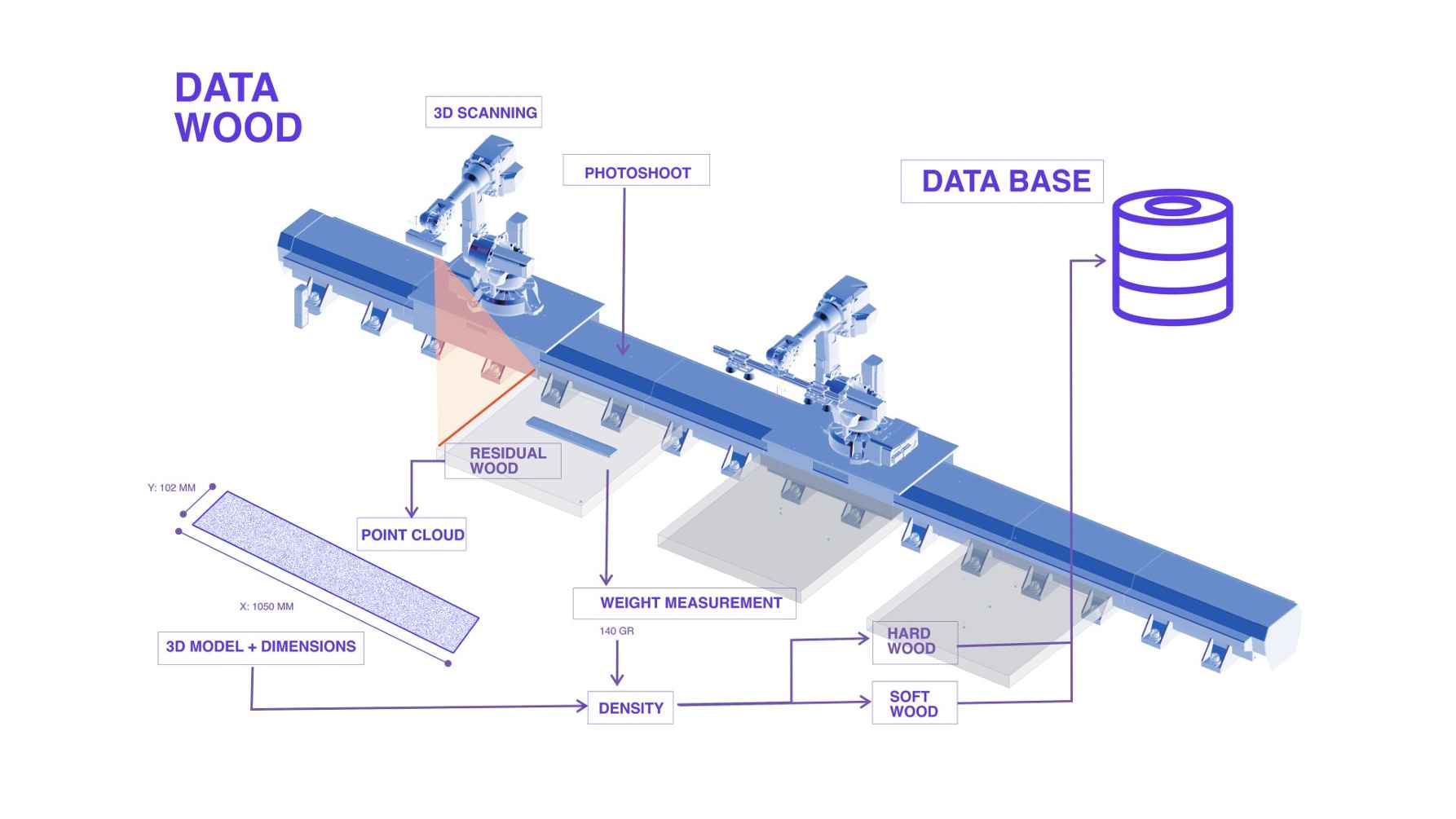Data Wood: the digital intake of residual wood

Wood is an important construction material, found in window frames, roofs and furniture, among other things. After production, leftover material always remains: residual wood. This usually is burned or downcycled into chipboard, as manual processing for high-grade reuse is not efficient. But what if the intake of residual wood could be automated? In the Data Wood project, the Amsterdam University of Applied Sciences (AUAS) investigated how robots can be used to process residual wood. The ultimate goal: to give residual wood a second life.
Contributing to the circular economy
Residual wood comes in all shapes and sizes. That very fact makes it difficult to sort and store it manually.
Because of the difference in sizes and types of wood, it is too labor-intensive to justify high-grade reuse. As a result, it often ends up in the incinerator. That's a shame, because residual wood is perfectly suited to high-quality reuse.

Javid Jooshesh
Project leader en researcher
That is why the AUAS Digital Production Research Group (DPRG), together with its project partners, have been looking into how they can organize the intake of residual wood with robots. Automated scanning and sorting of large numbers of pieces of wood of varying size, grain and species can make reuse financially feasible. The project thus makes an important contribution to the circular economy.
Method
The automated intake of residual wood is realized by means of an industrial robot, a 3D scanner, a camera and tools for picking up and weighing the residual wood. These machines work together to scan, weigh and photograph the wood.
Project leader Jooshesh explains how the digital intake process works: 'The user places a piece of wood on a table or conveyor belt. From that point on, the process is automated. A robot makes a 3D scan of the wood, after which a second robot picks it up and places it on a scale. A picture is then taken of it and the wood is placed in a separate sorting bin for completion.'
In the four minutes this takes, the system has created a 3D model of the wood and determined its characteristics: geometry, dimensions, weight, density, color and wood type. After identifying the wood, the characteristics are stored in a database. Designers can then use the information in this database in their design process. For example, they can create a new design based on the available residual wood.

Education
Several students from the Technical Informatics program were working on the project. They helped to realize the first step in the automated process - scanning the wood. In addition, a former intern supported the team as a student assistant in the field of software engineering.
Team
- Javid Jooshesh
- Marta Malé-Alemany(opens in new window)
Partners
In the Data Wood project, the AUAS was collaborating with the Amsterdamsche Fijnhouthandel, Konijn Houtbewerking and Nijboer Interieur & Design. The three parties contributed with practical knowledge about the use and properties of wood. For example, they helped to determine which characteristics of the residual wood should be collected in the database after the intake. In addition, they supplied residual wood for the project.
Digital Production Research Group
Data Wood is part of the research line Digital Production, of the Circular Design and Business research group. How can advanced design and manufacturing technologies - also known as “digital production” - help address societal challenges? That question is the focus of the Digital Production Research Group.